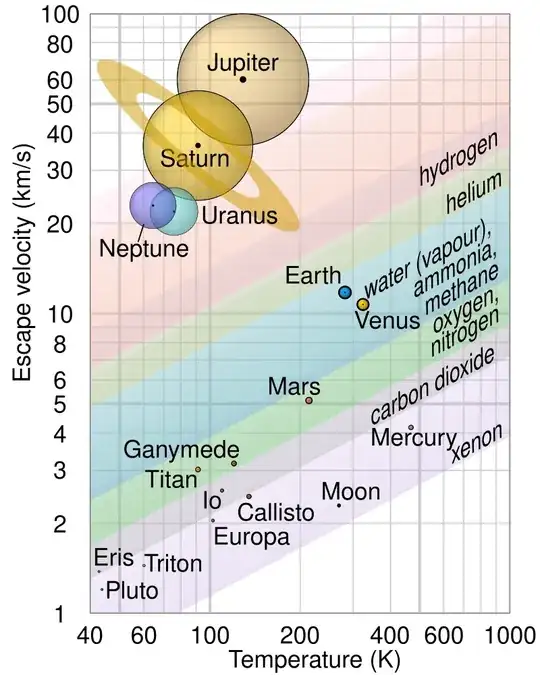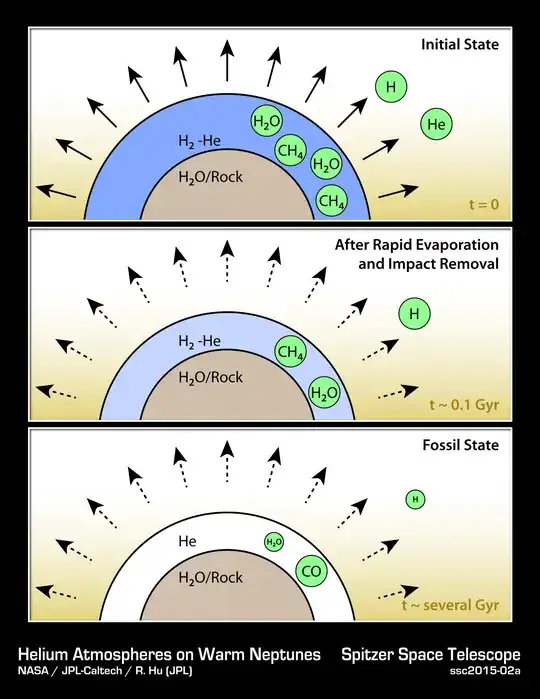I've been using this helpful diagram a lot for worldbuilding.
Now I came to think about the fact that helium is more massive than hydrogen, thus a scenario where hydrogen escapes, but helium is retained is conceivable and suggested by the diagram. Since this line of helium retention but hydrogen escape lies between the ice-giants and terrestrial planets, super-Earths come to mind as plausible candidates for such atmospheres. After all, a super-Earth might be a mini-ice-giant or a huge, terrestrial planet. Thus I designed the two following scenarios and would like you to critique them concerning their plausibility. If you have any additional thoughts about these worlds I would love to hear them as well. This question and this answer espacially already provided some interesting information about the conditions on a planet with a helium atmosphere.
Wet
As a low-mass-ice-giant/mini-Neptune/thick-envelope-super-earth (ca. 8.5 Me) Wet formed outside the frost-line and migrated inwards where it got hot enough for its hydrogen envelope to escape (ca. 230 K). According to my back of the envelope calculations, a 95%+ helium envelope of about 0.2 Me should be retained. This setup sounds quite similar to Sol's ice-giants, so a similar internal structure should be expected; a stereopalagic ocean-world with an HO2, CH4, and NH3 ocean, which solidifies deep down into exotic ices.
Dry
Dry is a rocky super-Earth which formed inside the frost limit with a substantial iron core (ca. 2 Me, ca. 1 Re). Like Earth, it accumulated a primordial hydrogen and helium envelope, yet unlike Earth it only lost the hydrogen and a small fraction of the helium as its parent-star ignited. I assume that the plausible pressure range of such a planet might go up to 1000 atm of helium (I'm pulling this out of a hat, what would be a plausible figure?), yet Dry is a moderate chase since the 400 K hot planet lost a significant fraction of the helium during a major impact. Thus the atmosphere of Dry contains 5 atm He and 1.6 atm N2. It seems surprisingly earthlike apart from the helium.
Again, are these scenarios of helium atmospheres plausible or are there issues I missed?
EDIT1: It has been pointed out that the existence of a primordial hydrogen-helium atmosphere on earth is unproven. DRY is possibly impossible.


The question is, though: do you want your world to have life develop on it?
– Nierninwa Nov 05 '19 at 17:44